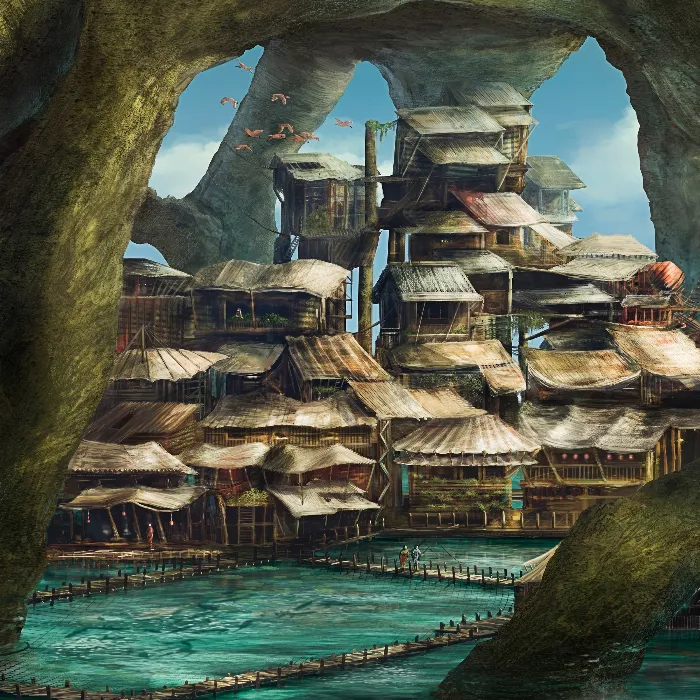First-class digital painting requires not only creative skills but also the mastery of tools that can maximally unleash your creative potential. Using the lasso selection tool in combination with the brush can help you create precise shapes and give depth and texture to your work. Let's take a look at the techniques that will allow you to elevate your digital painting skills to the next level.
Key Insights
- The lasso tool not only serves for selection but also for shape definition and edge processing.
- The combination of lasso and brush tools allows for the creation of complex structures and clear lines.
- Choosing colors from your reference image increases the realism of your works and enhances visual quality.
Step-by-Step Guide
1. Start with a Photo Reference
To create a comprehensive image, start with a photo reference. This reference already provides defined colors, shapes, light, and perspective. With these basic aspects, you can efficiently dive into the world of digital painting. You can use the reference for both color selection and shape design.
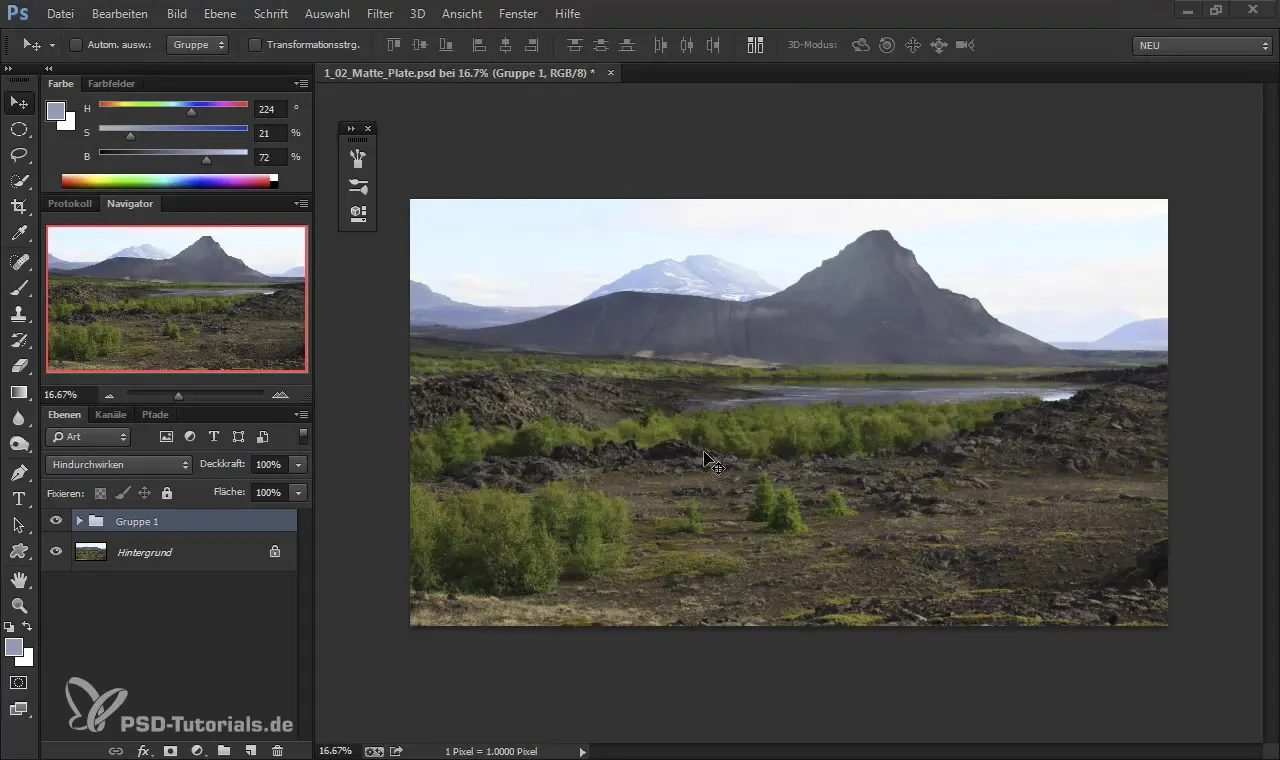
2. Create a New Layer
Create a new layer in your graphics program to ensure that you can make all changes independently of your reference image. Editing on a new layer allows for unlimited adjustments without affecting the original image. To hide the previous group, click on the appropriate icon.
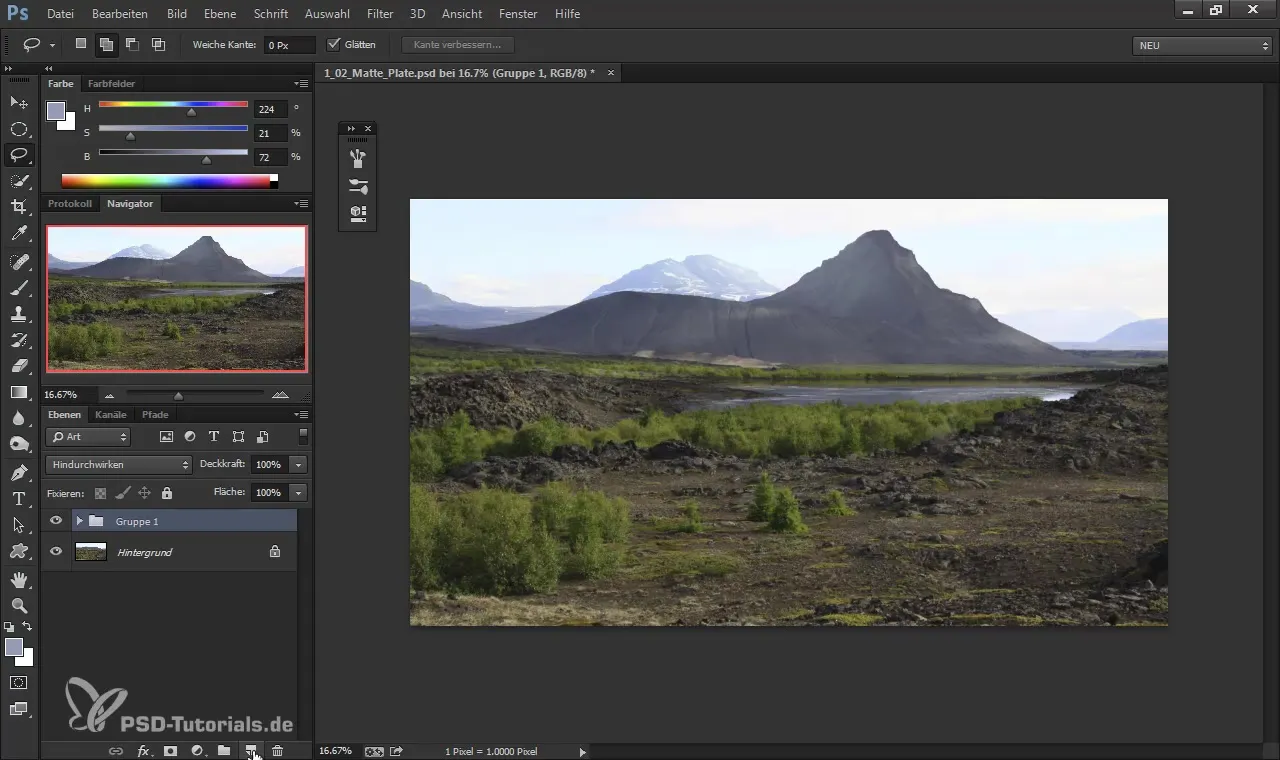
3. Choose Your Brush
Choose your brush to paint your first shapes. You can either determine the brush tips through the brush presets or select them directly by clicking on the working surface.
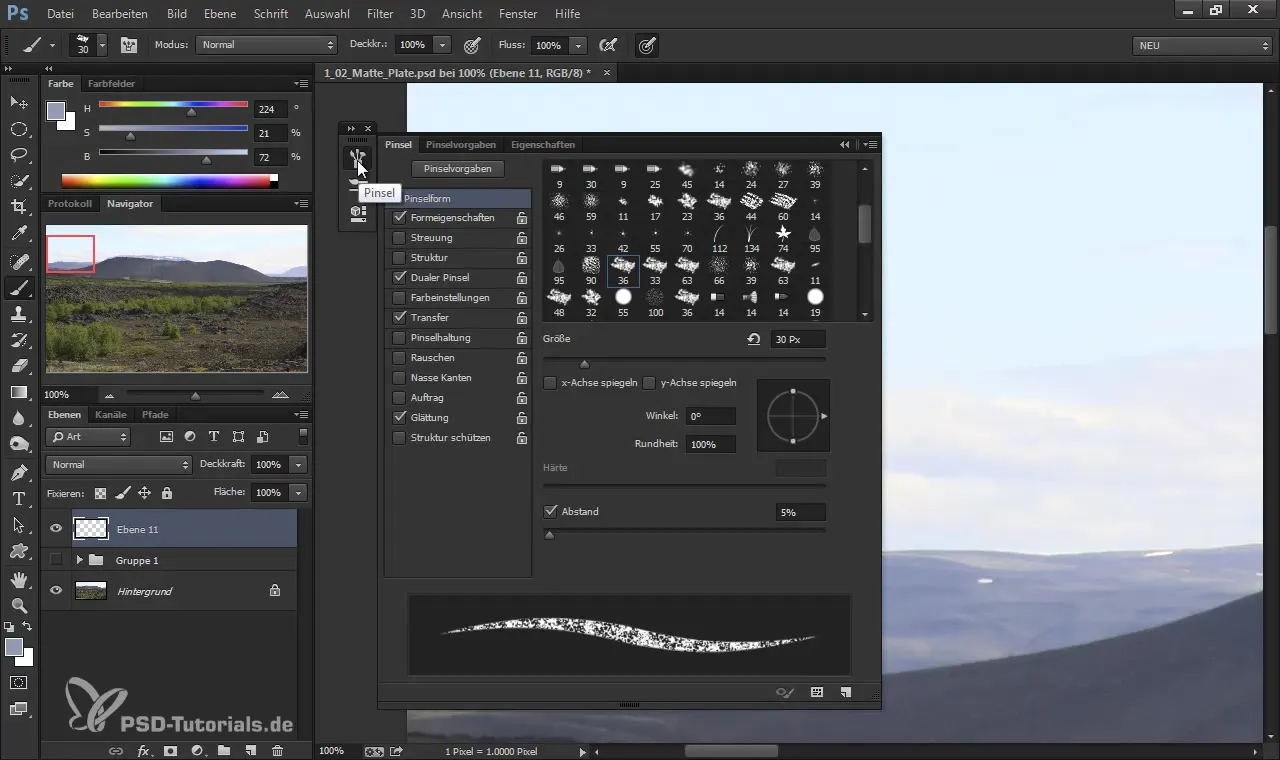
4. Make a Color Selection
Use the Alt key to pick a color directly from your image. Alternatively, you can also set the color manually. It is important to repeatedly take colors from your image while painting to avoid a monotonous appearance.
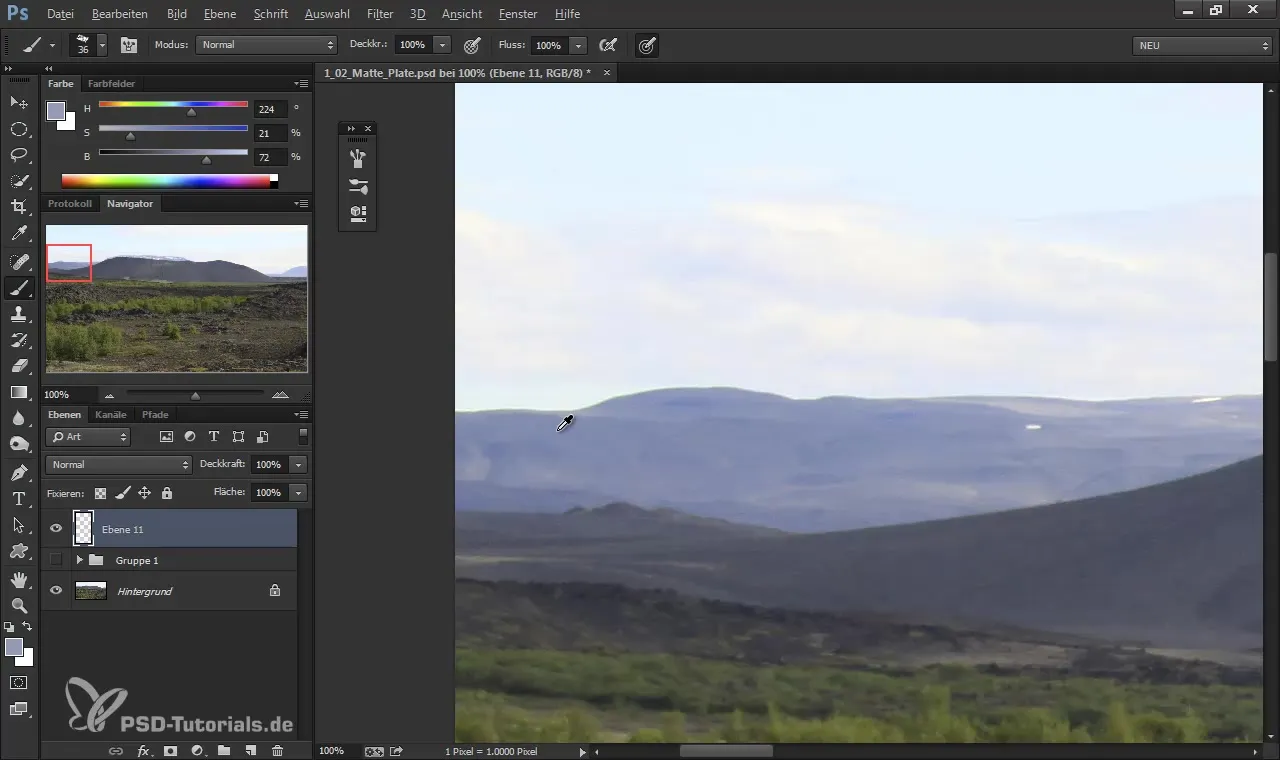
5. Work on the Edges
To optimize the edges of your shapes, use the lasso tool (Shortcut: L). Select the edge around the shape you want to improve. You can delete unwanted areas using the Delete key.
6. Introduce Differences in Color Brightness
To enhance the depth and dimension of your work, pay attention to the differences between light and dark colors. Mixing lighter and darker tones within a shape makes it appear more dynamic and alive.
7. Create Structures
Once you are satisfied with the shapes, start adding specific structures. Use brush pressure and various brush types for this. Experiment with horizontal and diagonal strokes to create different textures.
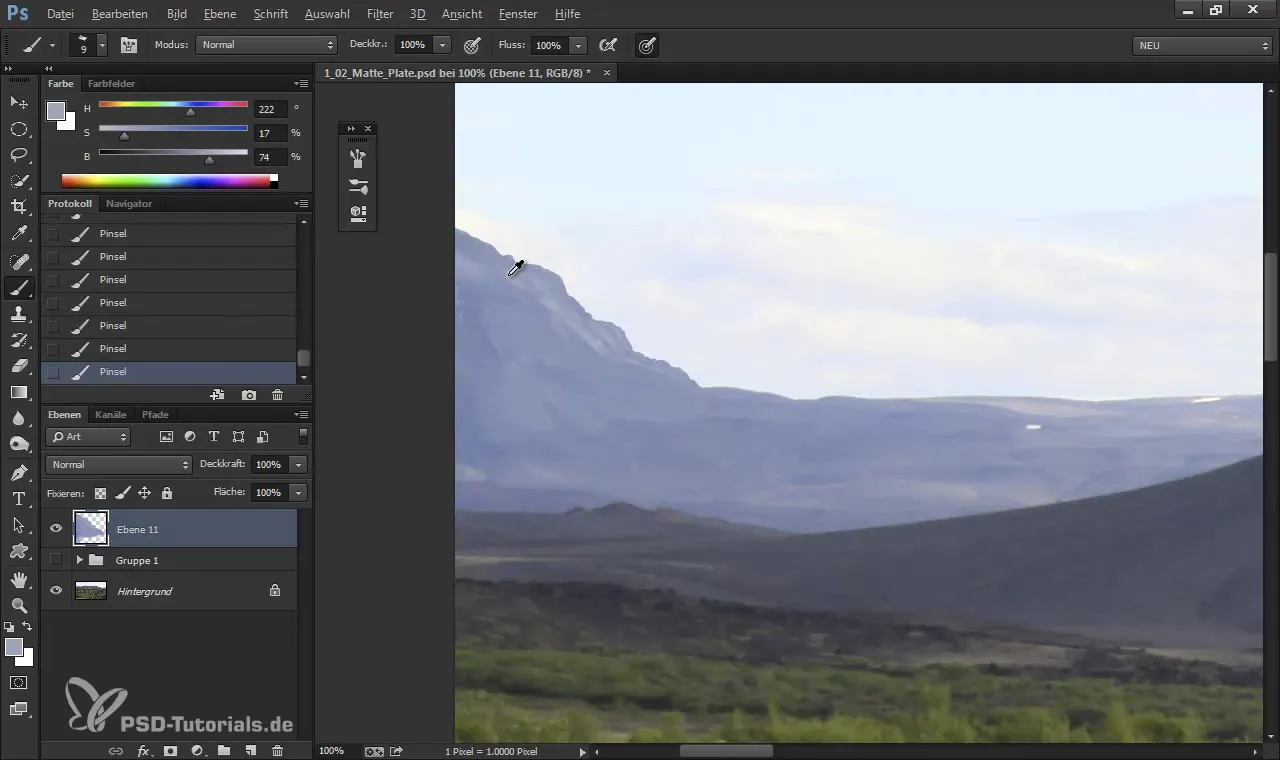
8. Edit and Refine Edges
A general tip – always work cleanly and ensure that the edges of your shapes are not blurred or inaccurate. Use the lasso tool again to refine the edges and delete unwanted areas.
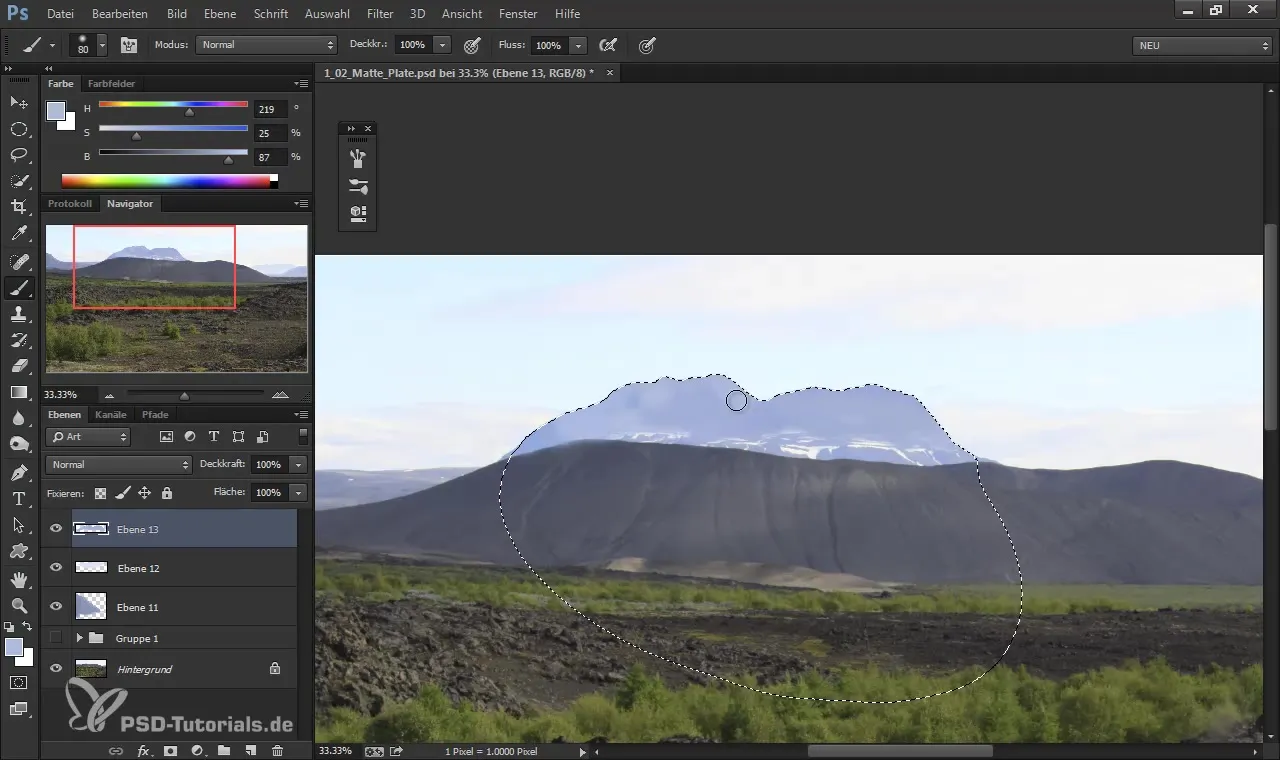
9. Insert Snow Structures
For snow-covered elements, use a square brush. To create a realistic snow appearance, ensure that the snow is not purely white but contains small shades of blue and gray.
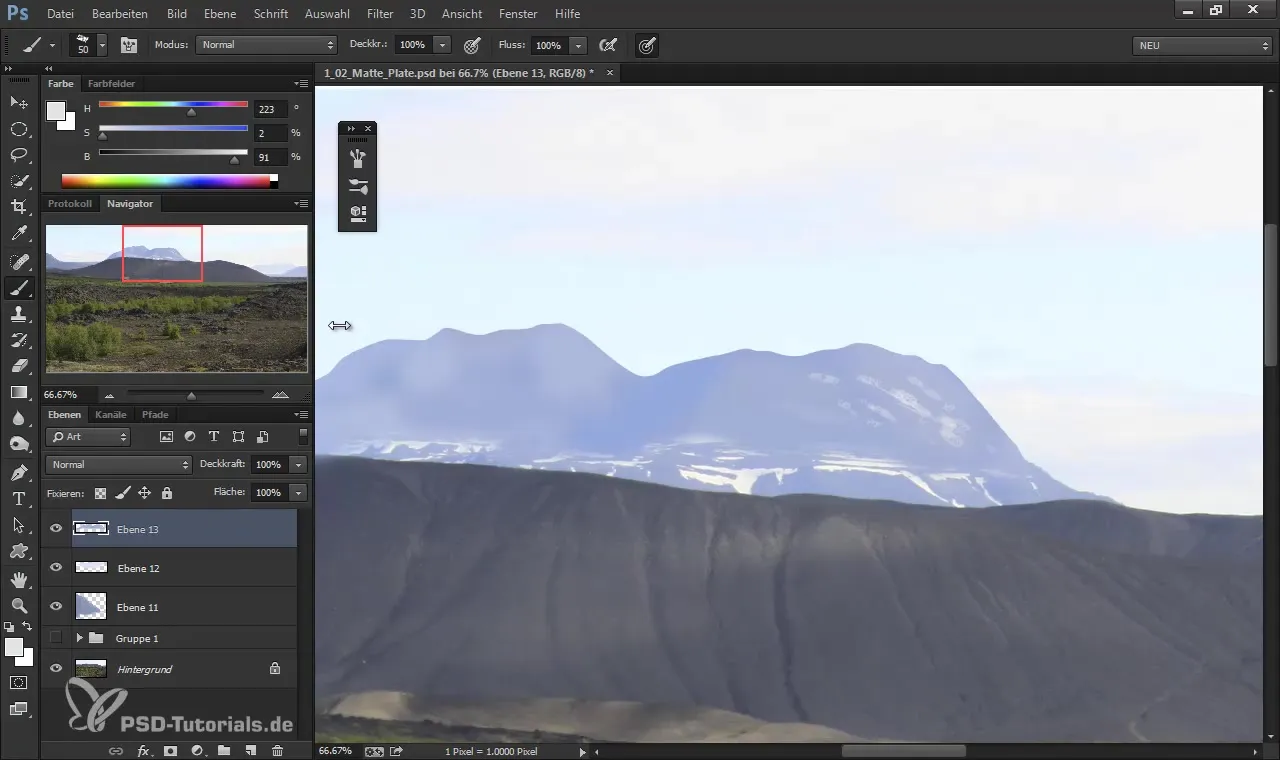
10. Harmoniously Combine Colors
Experiment with different color hues to make your structure appear more organic. Play with saturation and brightness to highlight the light and shadows in your composition.
11. Merge Layers
Once you are satisfied with your work, you can merge your layers (Shortcut: Ctrl + E). This prevents your workspace from looking cluttered, and you have more freedom when painting in a uniform area.
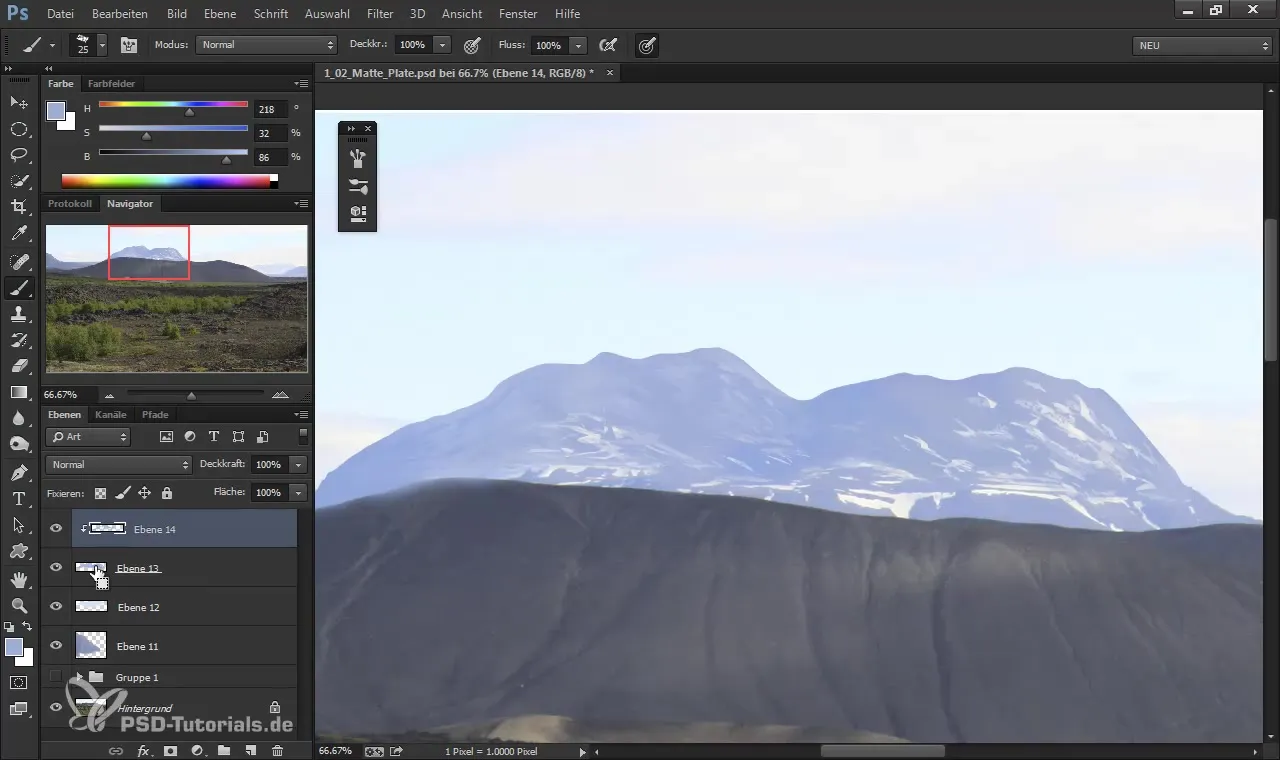
12. Final Touches and Adjustments
Finally, you can add finer details and structures. Use the lasso tool for more precise selections and ensure that your edges are well-defined. This will achieve a professional and clean final result.
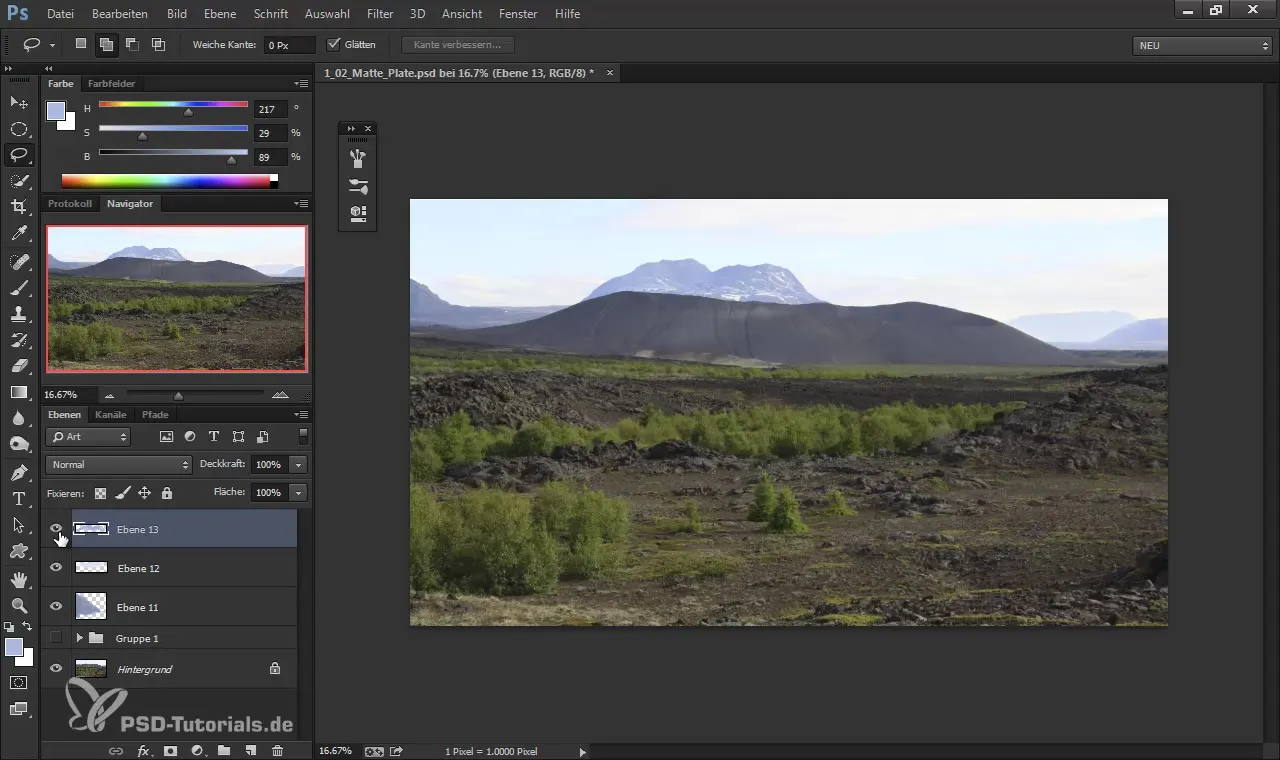
Summary – Digital Painting: Effectively Combining Lasso and Brush Tools
The combination of lasso and brush tools allows you to paint precise and detailed digital images. By working with photo references, accurately selecting colors, and embracing textures, your digital painting reaches a new level. Practice these steps, and you will quickly make progress in your technical skills.
Frequently Asked Questions
How can I work with the lasso tool?The lasso tool allows you to make precise selections by tracing along the edges of your shapes, which you can then edit or delete.
Can I use multiple layers?Yes, but it is often better to work with fewer layers to be more flexible during editing.
How do I select colors from the image?Hold down the Alt key and click on the color you want to select to use it in your color palette.
Why should I use different color tones?By mixing different color tones and saturations, you can create realistic depth and dimensions in your work.
What is the difference between brush and lasso tools?The lasso tool is mainly for precise selections, while the brush is used to paint shapes and structures.
